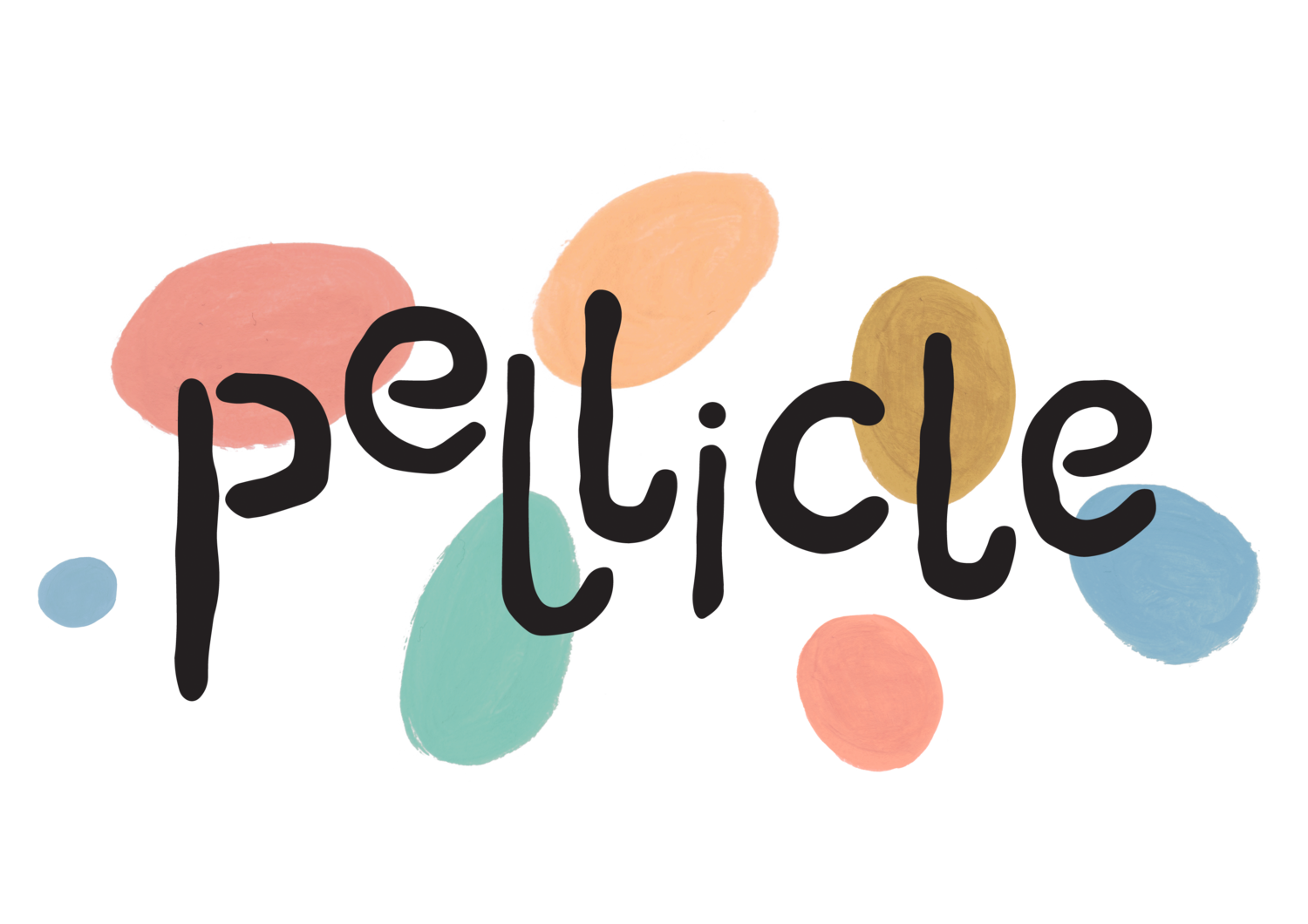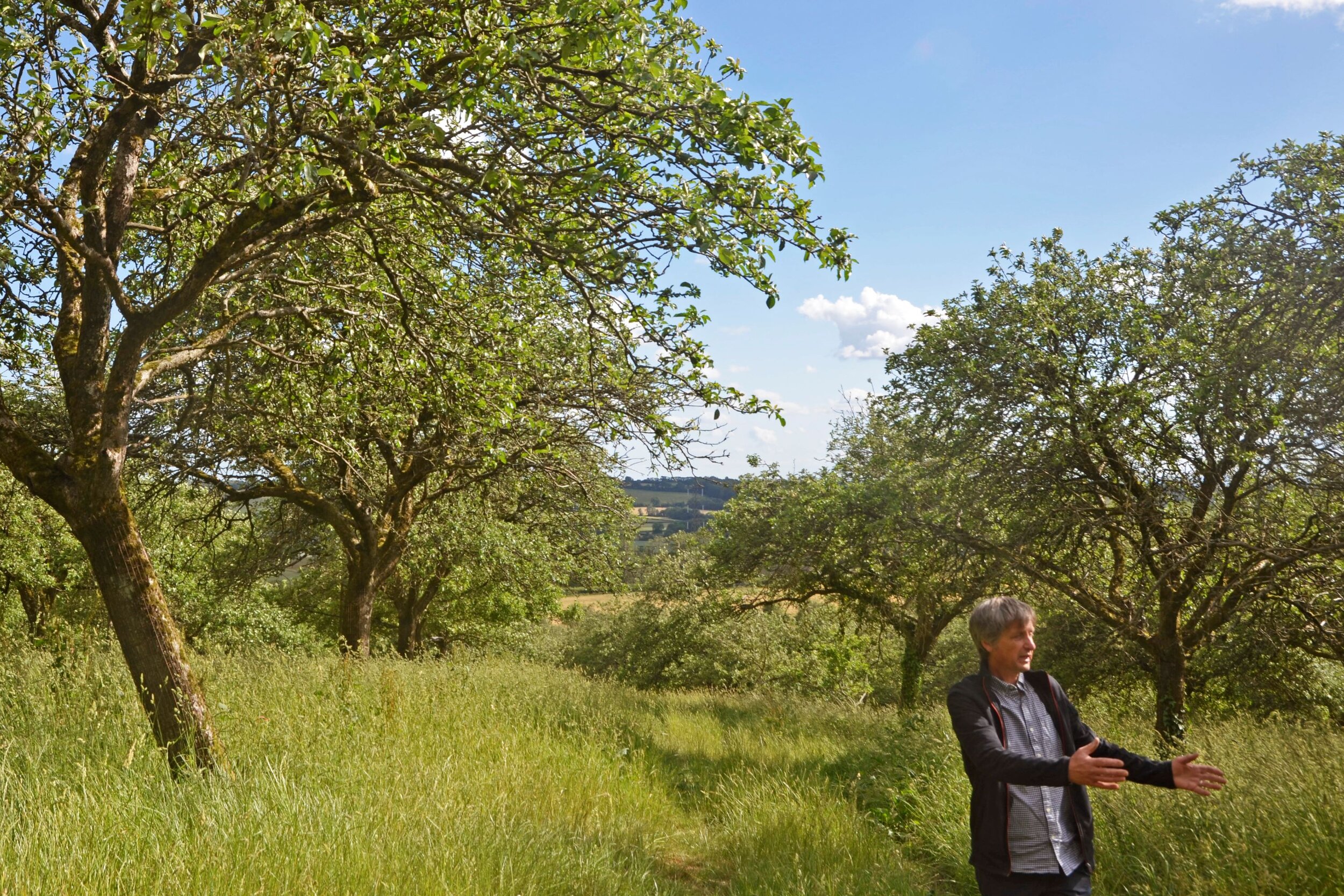Keeving Up Appearances — Pilton Cider in Shepton Mallet, Somerset
Martin Berkeley, the man behind Pilton Cider, is visibly excited about apples. His soft blue eyes sparkle as he talks about them, standing in front of litres of their juice slowly fermenting. He is full of tales of their flavours, chemistry and history, both local and international.
He tells me of untouched wild apple forests on the plains of Kazakhstan—the birthplace of the apple—each tree unique from its self-sown pip. He talks about shiny eating apples in the US, traditional varieties in France, and of course the abundant bittersweet apples here in the South West of the UK, where Martin tells me “the concentration of cider apples is higher than anywhere else in the world.”
Photography by Milo Herbert
Back in 2009, Martin spotted some of these traditional cider orchards near his house in Somerset and started looking into cider-making. When Martin's wife Angela, who was brought up in France, got wind of this, she said: “well if you've got to make cider, why can't you make it like French cider, because it's much nicer than English cider.” So, he thought (he tells me with a twinkle of hindsight) “how hard can that be...”
The English name for the method often used in France is ‘keeving’ (défécation in French). This is a traditional cider-making process that puts the apple, and all its natural elements front and centre. Everything you need is in the fruit you started with, so it suits Martin down to the windfall-strewn ground. Keeving is in fact a broad term—it can be used to describe cidermaking involving any number of traditional elements.
All definitions involve a long, slow fermentation, where the wild yeasts present in the pressed apple juice are not allowed to reproduce as quickly as they might, through various means. Firstly, there's ideally a lack of nutrients present in the apple to begin with, then there's the layer of pectin or chapeau brun (brown hat) which forms and traps the nitrogen essential to yeast's growth, and finally, there's temperature control.
When this slow-moving fermentation has finished, the yeast hasn't processed all of the sugar from the apple juice because it didn't have sufficient nutrients (nitrogen, vitamins and minerals) to do so. This makes the resulting cider “naturally sweet through lack of nutrients,” which is the definition that Martin has settled for.
“It's always difficult though, the language, because people don't want sweet cider,” he tells me. “‘Naturally medium sweet’ sounds a bit silly—or ‘naturally unsweetened’—it's quite difficult to get it right. What we really want is lots of producers making it so ‘keeved cider’ becomes a thing.”
““He knows how to make cider and is willing to mess around, make mistakes, learn and make something amazing.””
To get a better picture of the British viewpoint on keeving, I spoke to Allen Hogan from Hogan’s cider, whose ‘French Revelation’ uses the process. “We don’t have much knowledge of it in the marketplace,” he tells me. “Keeving is just how the French do it, and I respect the French as cidermakers, so I’m just copying really.”
While Allen agrees with Martin on the idea of “making keeving a thing,” he identifies an issue. “The trouble is—there’s a communication problem in the cider industry. Consumers don’t even understand cidermaking—people often ask me how I ‘brew’ my cider—so first of all we have to teach them about cider, and then keeving is another step. There’s a lot of work to be done.”
***
It's not easy letting apple juice ferment naturally, because yeast doesn't always behave predictably, temperatures change from year to year, and crops are never the same. It is an “artisan method with biochemical results,” according to Martin. That means there's a lot that can go wrong.
At Pilton it's worth the risk because what can go right is so right. Sweetness is not the only distinctive feature of keeved cider—there is also a characteristic complexity to the flavour.
“You could have a dry keeved cider but it should still taste different because you've got that long, slow fermentation with a succession of different yeasts. Like wildflowers on a chalk downland where there's not enough nutrients for the nettles to grow and the long grass, so you get the beautiful little flowers,” he says.
It's true; keeved cider is to non-keeved cider as Monet is to Picasso. The flavours arrive dappled on your tongue, each sip bringing a different colour. Green is achieved by waves of blue and yellow, pinks come as dashes of white and red.
While I try to get my head around the science of keeving, standing in front of the tanks where it happens, Martin clambers over one to give me a taste of Pilton’s 2019 keeved cider at the end of this first stage of fermentation. It is indeed sweet, and mellow, with honey notes and a warm apple-rich flavour. (What I am tasting is sweeter than the finished product; Martin won’t bottle it yet.) You might need a biochemistry degree to understand how it got there, but you certainly don't need one to enjoy the results.
***
Martin first gave keeving a go in his garden shed and found that—while this early incarnation of home-made cider proved popular among his friends—he was having some teething problems with “bottles exploding and stuff,” as he puts it. By 2010, Pilton Cider had been born and Martin decided to throw himself into his new venture, popping off to Normandy to learn his new trade from some experts.
Although it’s the birthplace of the process, even Norman cidermakers sometimes find that the method doesn’t work for them. Cyril Zangs of Cidre2Table also found himself learning his trade in northern France, deciding that returning to the family trade of cidermaking in Normandy “would be a good challenge.”
He tested various local methods in the area before settling on his own, and tells me that he too tried keeving early on in his cider career. He found that the chapeau brun which formed was too thin for it to work. “My apples were too clean,” he says when I ask why this happened. It really is back to basics: cidermakers must be guided by the fruit in their hands in the development of their process.
As luck would have it, the Harry Masters Jerseys, Yarlington Mills, Tremlett's Bitters and their “orchard blend” friends just down the road from Martin and Angela’s Somerset cottage lend themselves naturally to keeving, since they come from “gnarly old trees” and are therefore already poor in nutrients and high in tannin.
Their abundance in the area is in part thanks to Babycham's local legacy: the infamous sparkling perry whose enormous popularity brought much wealth and many orchards to its Somerset hometown of Shepton Mallet. Shepton is also home to Martin's cider tanks, in the impressive grade-two listed Anglo Trading Estate building, although the apples he uses are still from the producers' eponymous town of Pilton.
If such diverging drinks can exist thanks to the same orchards, it seems that while the juice you have access to matters, what you do with it changes everything too. The second cider that Martin lets me taste straight from the tank is part of an exciting project involving 5000 litres of Herefordshire apple juice, which was pressed by Ross on Wye Cider, partitioned into five lots and sent off to four other cidermakers across the UK: Oliver’s, Pilton, Hogan’s and Little Pomona.
Each maker is “doing their thing” with it and hopefully one day they'll be able to do a series of events with the results. “Everyone involved is dead excited; it’s something we’ve never done before,” Allen at Hogan’s cider tells me, excitedly. “I really admire Martin for making it happen.” He’s hoping that this is the sort of project we will see more of in cider over the coming years. “You can see it snowballing and really taking off. It’s a chance to showcase our skills on a level playing field,” he adds.
***
Something striking about Martin is that he’s almost equally as excited about how to get people to drink cider as he is about the cider itself. He takes inspiration from the craft beer movement in the UK and believes that collaborations (and the resulting excitement) are key if cider wants to start being allowed to play with the “cool kids” of craft beer and natural wine.
““Keeved cider is to non-keeved cider as Monet is to Picasso. The flavours arrive dappled on your tongue, each sip bringing a different colour.””
“Cider people tend to be in the countryside doing their thing,” he tells me, adding that there’s a tendency among some to think: “I do it this way, any other way is wrong, this is the only true way and industrial people are the devil.” He finds himself looking towards breweries with both envy and admiration; it's beer’s cooperative approach which Martin hopes will make cider into “the next big craft beer.”
As we move into the bottle store and he shows me his range of ciders, he spends as much time excitedly explaining the new projects and ventures of other producers of cider, beer and wine. For example, early on in the Pilton journey, he tasted a 100% quince cider by Oregon’s Art and Science on a bottle list at Brooklyn bar, The Owl Farm, while in town for the annual CiderCon.
“I thought ‘wow, that’s amazing’ and came back and found that there's a big apple grower in Somerset and where their apples had died,” Martin says. “They'd been planting quince trees—a hundred quince trees, 20 years old, and they'd never sold them to anybody! So I said–I'll have some of your quinces. Like a fool!”
Fool he is not; the resulting 2018 apple and quince cider, Pomme Pomme, has the astringency of the quince, with the through-line of the sweetness from his keeved apple cider. There’s a fun, fruity nose to it and it's immensely drinkable.
“Martin’s a great proponent for [collaborations] to be both in nature and in recipe,” Martyn Goodwin-Sharman, who advocates cider online under the name cidershit, tells me. “He knows how to make cider and is willing to mess around, make mistakes, learn and make something amazing… I mean, that’s what every drink needs!”
***
At the end of our afternoon together, I follow Martin’s van out of Shepton so he can show me the orchards near his house. There’s a serenity to the orchards here. Long grasses brush the tree trunks, branches twisting awkwardly against the blue sky, laden with young cider apples. They are an integral, serendipitous part of this ancient Somerset landscape. The orchards have been traditionally designed to provide ground for cattle to graze between the trees, which is a romantic, if not very efficient way to grow apples.
It’s a sunny day, and Martin tells me that a hotter summer means more sugar in the apples—great news for keeving. Looking across the fields I can see Pilton’s other claim to fame: the huge metal frame of Glastonbury festival’s pyramid stage sits quietly in an empty field.
A comforting thought occurs. Although we weren’t able to enjoy the Somerset sunshine in Pilton at the festival this year, the apples were there, doing it for us instead. And next year, we’ll be certain to help Martin appreciate the naturally sweet results in the shape of his deliciously complex keeved ciders.

























